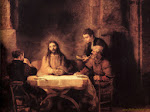We ha ve almost all had Mormon missionaries visit our door. Usually we come up with some excuse to send them away. Sometimes we are honest and say we do not want to talk. Occasionally, we engage in a brief discussion with them. Rarely do we want to find out what they want to talk about, much less engage in a lengthy discussion with them, though there are exceptions. Some they visit want to learn everything they have to offer, and that is what the Mormon missionaries live for.
ve almost all had Mormon missionaries visit our door. Usually we come up with some excuse to send them away. Sometimes we are honest and say we do not want to talk. Occasionally, we engage in a brief discussion with them. Rarely do we want to find out what they want to talk about, much less engage in a lengthy discussion with them, though there are exceptions. Some they visit want to learn everything they have to offer, and that is what the Mormon missionaries live for.
However, the Church of Jesus Christ of Latter Day Saints (often called Mormons or a bbreviated LDS) represents a big slice of what is now considered mainstream America. The LDS say they have 5.7 million member in the U.S., and 13 million worldwide. That would make them about the 4th largest church body in the U.S. behind the the Roman Catholic Church, the Southern Baptist Convention and the United Methodist Church. Critics say if lapsed and unlocatable members are discounted, the number stands around 1.3 million. It is considered one of the fastest growing churches today.
bbreviated LDS) represents a big slice of what is now considered mainstream America. The LDS say they have 5.7 million member in the U.S., and 13 million worldwide. That would make them about the 4th largest church body in the U.S. behind the the Roman Catholic Church, the Southern Baptist Convention and the United Methodist Church. Critics say if lapsed and unlocatable members are discounted, the number stands around 1.3 million. It is considered one of the fastest growing churches today.
In any case, t he Mormons are part of our American history and experience. Their difficult migration starting in 1846 from Navoo, Illinois to what was then outside of the United States in the Great Salt Basin was epic. Their establishment of a settlement, community, city, and civilization in the midst of a desert then considered a wasteland was breathtaking. And they have gone from being considered outcasts to being considered part of mainstream America in slightly over two generations. Their members occupy prominent positions in our political life, including Senate Majority Leader (Harry Reid) and recently a prominent Republican candidate for President and former Governor of Massachusetts (Mitt Romney.)
he Mormons are part of our American history and experience. Their difficult migration starting in 1846 from Navoo, Illinois to what was then outside of the United States in the Great Salt Basin was epic. Their establishment of a settlement, community, city, and civilization in the midst of a desert then considered a wasteland was breathtaking. And they have gone from being considered outcasts to being considered part of mainstream America in slightly over two generations. Their members occupy prominent positions in our political life, including Senate Majority Leader (Harry Reid) and recently a prominent Republican candidate for President and former Governor of Massachusetts (Mitt Romney.)
A good television show that considers their past and rising role in America i s simply called "The Mormons." It has aired on many PBS stations and is produced in partnership by American Experience and Frontline. It is a four hour show on DVD that you can probably find at your local library. You can also watch it online at: http://www.pbs.org/mormons/. It explores the great strengths of Mormonism, along with some of its troubling aspects, and has a fair balance of supporters and detractors. It focuses on the LDS church as part of America, and its unique role as an American religion.
s simply called "The Mormons." It has aired on many PBS stations and is produced in partnership by American Experience and Frontline. It is a four hour show on DVD that you can probably find at your local library. You can also watch it online at: http://www.pbs.org/mormons/. It explores the great strengths of Mormonism, along with some of its troubling aspects, and has a fair balance of supporters and detractors. It focuses on the LDS church as part of America, and its unique role as an American religion.
I will be exploring some aspects of Mormonism in future blogs.
